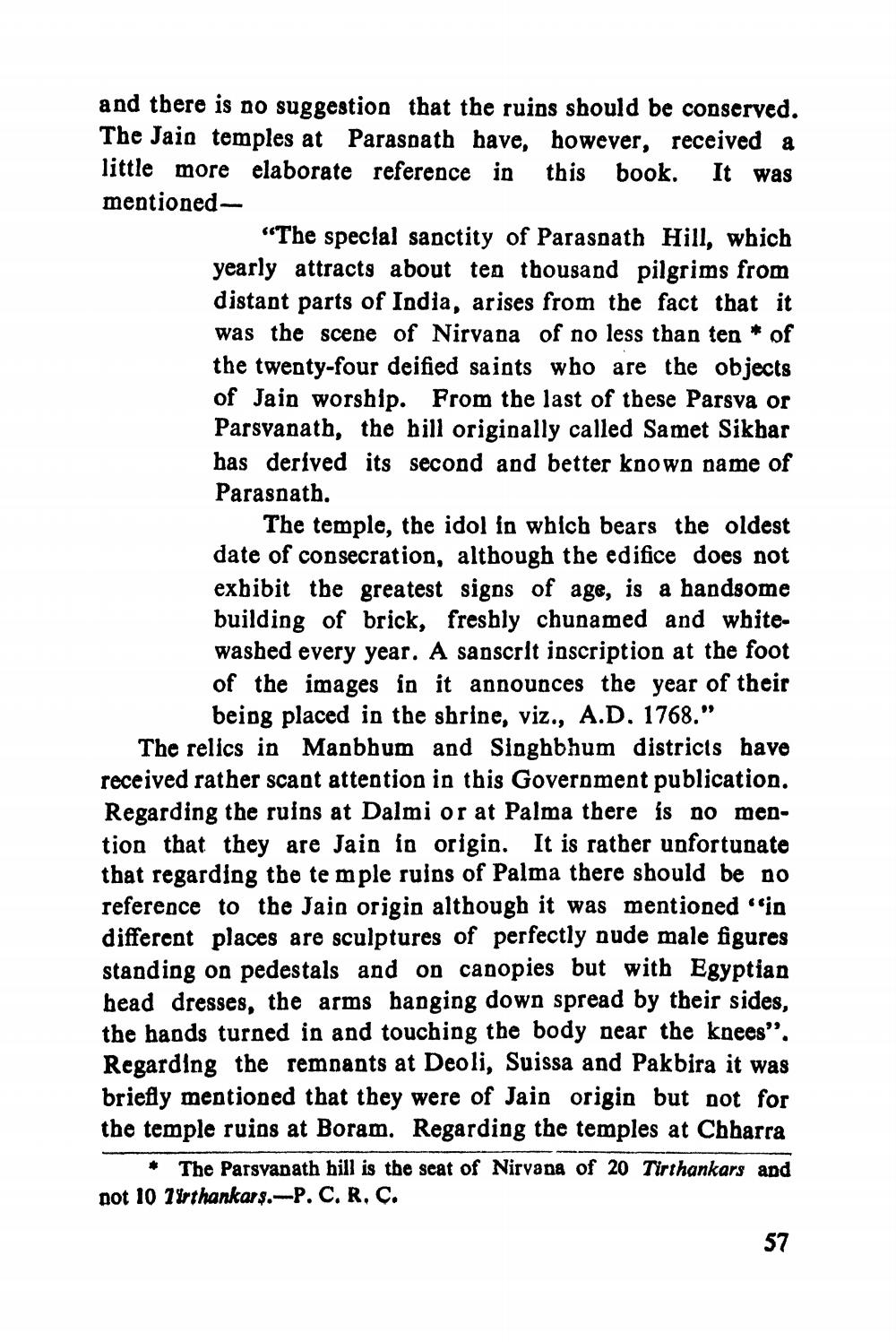________________
and there is no suggestion that the ruins should be conserved. The Jaio temples at Paraspath have, however, received a little more elaborate reference in this book. It was mentioned
"The special sanctity of Paraspath Hill, which yearly attracts about ten thousand pilgrims from distant parts of India, arises from the fact that it was the scene of Nirvana of no less than ten * of the twenty-four deified saints who are the objects of Jain worship. From the last of these Parsva or Parsvanath, the bill originally called Samet Sikbar bas derived its second and better known name of Parasnath.
The temple, the idol in which bears the oldest date of consecration, although the edifice does not exbibit the greatest signs of age, is a handsome building of brick, freshly chunamed and whitewashed every year. A sanscrit inscription at the foot of the images in it announces the year of their
being placed in the shrine, viz., A.D. 1768." The relics in Manbhum and Singhbhum districts have received rather scant attention in this Government publication. Regarding the ruins at Dalmi or at Palma there is no mention that they are Jain in origin. It is rather unfortunate that regarding the temple ruins of Palma there should be no reference to the Jain origin although it was mentioned in different places are sculptures of perfectly nude male figures standing on pedestals and on canopies but with Egyptian head dresses, the arms hanging down spread by their sides, the hands turned in and touching the body near the knees”. Regarding the remnants at Deoli, Suissa and Pakbira it was briefly mentioned that they were of Jain origin but not for the temple ruins at Boram. Regarding the temples at Chharra
* The Parsvanath hill is the seat of Nirvana of 20 Tirthankars and pot 10 74rthankars.-P.C.R.C.




